COSMIC EAR
Aug.18, 2024
A NEW GROUP IS BORN!!!

- Goran Kajfes – trumpet, pocket trumpet, synth, electronics, percussion
- Mats Gustafsson – tenor sax, flute, slide flute, Ab clarinet, live– electronics, organ, harmonica
- Christer Bothén – donso ngoni, bass clarinet, contra bass clarinet, piano
- Kansan Zetterberg – bass, donso ngoni
- Juan Romero – congas, berimbau and percussion
A NEW ensemble devoted to creative and spiritual imoprovised music.
Kajfes and Gustafsson have had the urge and need for years to put a smaller ensemble together for music formed by compositional works and improvised freer Jazz.
Numerous collaboration in larger ensembles such as Fire! Orchestra has opened up for possibilities to work in a smaller context.
Our hero and master Chister Bothén has laid the fundaments for us to build on.
Original material by Kajfes, Gustafsson and Bothén is mixed with compositional works by Don Cherry, Codona and Frank Lowe in a unique mix of music originating from Mali hunters music , Maroccoan Gnawa traditions, Swedish folk music, South American percussive actions, free improvised music and Free Jazz + more…..
The roots are forwards. And Backwards.
Music is NOW!
NOW MUSIC!
Brazilian berimbau, Malian donso ngoni, North african karignan, South american percussions, bells and metals, trumpets, clarinets and saxophones and various flutes on top of a steady double bass frenzy and live electronics activities and actions, creating a contemporary music never heard before.
FREE THE JAZZ!

photos: Johan Bergmark
BOOKING: Martyna van Nieuwland
m.j.markowska@gmail.com
tel: +358442847831
Debut album on WeJazz to be released spring 2025.
recent review: by Christopher Laws

The saxophonist Mats Gustafsson and trumpeter Goran Kajfeš already seem to work at a maddening pace, major figures of the European avant-garde whose hands are all over the Swedish jazz scene, from Gustafsson’s indefatigable Fire! trio and his foundational work with GUSH which now stretches back more than three decades to the freeform theatrics of his quintet The End, while the versatile trumpeter is a longtime member of Angles and Nacka Forum, yet still finds the time to head out in another direction as the leader of the psychedelic ensemble Goran Kajfeš Tropiques.
Sometimes their penchant for collaboration and experimentation tends in the direction of big band, with last year’s buckling and swaying opus Echoes by Fire! Orchestra featuring a 43-strong cast of mostly Scandinavian musicians, including Kajfeš who also sat in with the Norwegian drummer Gard Nilssen whose 17-piece Supersonic Orchestra made a stellar debut on We Jazz Records. While there are countless examples of cross-pollination, both iterations of Fire! plus Angles, Nacka Forum and Goran Kajfeš Tropiques tend to be girded by the bass of Johan Berthling, with Fire! especially building upon swaggering riffs and steady repetitions while Berthling is also more than capable of rumbling in the background or laying out walking lines and cosmic grooves. Another familiar face is the bass clarinetist Christer Bothén, a member of the previous generation who played on the second Goran Kajfeš Tropiques album Into the Wild plus Echoes and the Alex Zethson record Terjes last year.
Describing the venerable Bothén as one of their heroes, for some time Gustafsson and Kajfeš have been looking to put together a smaller ensemble with a spiritual bent and a renewed focus on improvisation. So on Thursday night as part of the Umeå Jazzstudio’s autumn schedule, local jazz fans were treated to a world premiere as Cosmic Ear played to a full audience, extemporising over a handful of Don Cherry tunes while also elaborating a few original compositions.
Conceived as a quintet, Cosmic Ear seek broader horizons as they draw from the music of Don Cherry, his Codona trio with Collin Walcott and Naná Vasconcelos who released a hat-trick of self-titled albums on ECM between 1979 and 1983, and Frank Lowe who played memorably alongside Rashied Ali, Alice Coltrane and Cherry before branching out as a leader. In the process they embrace a fusion of secular and spiritual forms including the West African griot tradition, the Gnawa music of Morocco which was historically performed as part of all-night rituals comprising the burning of incense and the invocation of spirits through poetry recitals, call-and-response singing and ecstatic dance, and aspects of Latin American percussion in addition to Swedish folk music and the pantheon of European free jazz.
That portends a diverse array of instrumentation. Codona for instance featured Cherry not only on his familiar trumpet but on flutes, melodica and the donso ngoni or hunter’s harp, the traditional Malian griot medium, while Walcott whose untimely death in 1984 put an end to the trio brought to bear a wealth of learning in Hindustani classical music, playing the sitar and the tabla while turning just as adeptly to the Zimbabwean mbira, the hammered dulcimer or the timpani of his youth. Naná Vasconcelos meanwhile did much on the three Codona albums to introduce the berimbau to jazz, a single-string Angolan bowed instrument which became common in Brazilian music, used within the Candomblé religious tradition and the capoeira branch of martial arts.
In fact it was Christer Bothén who introduced Don Cherry to the donso ngoni, tutoring him in the instrument after Cherry and his partner Moki, the Swedish painter and textile artist, returned from the United States in 1970 and made their home out of an abandoned schoolhouse in the Skåne County area of Tågarp.
Bothén and the percussionist Bengt Berger toured with Don and Moki as they devised their Organic Music Theatre, a journey which culminated in 1972 with the record Organic Music Society, where Vasconcelos plays the berimbau and Bothén the donso ngono, while the 1974 album Eternal Now also features Bothén on that hunter’s harp as Berger expands his outlook to the mridangam and mbira, with both of the Swedes also playing Tibetan bells and tinkling away behind the piano. A live set entitled Organic Music Theatre: Festival de jazz de Chateauvallon 1972 which also features Vasconcelos on the berimbau and Bothén on the donso ngono was released by Blank Forms in 2021.
Cosmic Ear then comes into view as both a continent-spanning exercise in spiritualism and improvisation and as an intimate act of tribute for Bothén, who at the tender age of 83 years old sits at the epicentre of the lineup. He plays the donso ngoni alongside the bass clarinet, contrabass clarinet and piano, while Gustafsson picks up the tenor sax, flute and slide flute, an A-flat clarinet plus organ, harmonica and live electronics with Kajfeš provisionally on the trumpet and pocket trumpet but readily swapping over to the synthesizer and other electric effects. The Argentine-Swedish percussionist Juan Romero, a Kajfeš and Fire! Orchestra fellow traveller, steps in on the congas, berimbau and other accoutrements, while Kansan Zetterberg an Ivo Perelman and Jonas Kullhammar collaborator who has been a regular partner of Susana Santos Silva completes the quintet on bass.
The only problem as Cosmic Ear launched into a trio of Don Cherry pieces was that Bothén had come down with a fever, and was therefore absent as the rest of the band made their grand stage debut. Fortunately this multifaceted lineup can easily adapt, with Kansan Zetterberg dividing his time on the night between the double bass and an otherwise forlorn berimbau.
Between hushed mumbling and the occasional clinking of glasses, Cosmic Ear almost imperceptibly began with the low hum of Zetterberg’s bowed bass and some light mallet percussion. Kajfeš came in with a kind of bow-legged duck walk on the trumpet as Gustafsson dabbled in some live electronics, and before long the trio of Kajfeš, Zetterberg and Romero had found their groove as plucked bass and deft percussion made for an especially limpid rhythm section.
When Mats Gustafsson began to air out his flute and Romero switched to the congas, an Afro-Cuban rhythm vied with a reedy and grooving arabesque. Carrying the melody then blowing through his instrument in short and sharp bursts, the sound of the flute became coarser and more constricted, plotting a more angular course as the players unleashed a few hollers and hoots. Then Kajfeš returned with a sonorous trumpet line which swept its way between the greying skies and odorous lanterns or minarets.
A mid-pitched organ drone hovered like a mist over and through the composition, with slouching trumpet lines and watery percussion giving way to a free bass solo. Then as Zetterberg began jabbing away with his bow, Gustafsson and Kajfeš came out the other end through a celestial tread of synthesizers and rustling bell chimes. Gustafsson returned to his tenor saxophone and began to drive the tempo of the band, which appeared to be building towards its first big climax, but instead they held their ground and stayed firmly in the moment.
Improvising around Cherry’s compositions, they segued easily between pieces before the attentive and softly-lit crowd in Studion. With Kansan Zetterberg conjuring a thick low end on the bass, Juan Romero began playing berimbau and shakers. Gustafsson blowed raspberries and took long drags on his tenor sax and Kajfeš on the trumpet made celestial whorls or sputtering splotches. Together their steeped sound was redolent of ‘Love Train’ from Eternal Now or some of the more propulsive pieces on Organic Music Society, like ‘Elixir’ or the ‘Relativity Suite’ by Cherry, Bothén and Berger or the flowing and flute-blown ‘Hope’ and ‘Utopia & Visions’.
In its slower and swampier moments, for those wafting horns and the dexterity of its percussion, this first half of Cosmic Ear’s set also evoked ‘Tibet’ and those Codona albums, from the title track of the first record to the trumpet fanfares and woozy melodica of ‘Malinye’ and the brief ‘Lullaby’ of Codona 3. The double bassist William Parker has always cited Don Cherry as an influence, being introduced to the donso ngoni by the trumpeter back in 1975, and for a contemporary relation to the sort of sound which Cosmic Ear summoned here one need look no further than the Parker, Cooper-Moore and Hamid Drake collaboration from earlier this year entitled Heart Trio.
Zetterberg crouched into position on the ngoni and just as the quartet’s music became more marshy and distorted, a moment of tender harmony arose between Gustafsson’s flute and Kajfeš on the trumpet. With the fifth band member Bothén present in spirit, Zetterberg played a bounding motif with slinky overtones and then Romero was afforded a conga solo of sorts, accompanied by the trumpet before the donso ngoni found itself back in the heart of the mix. Saxophone and drums followed a winding rapids, buffeted from side to side and Gustafsson and Kajfeš pulled from both ends of the composition, making space for a rare cymbal crash as Cosmic Ear broke for a short intermission.
Cosmic Ear plan to play the European festival circuit next year, and will hopefully manage to incorporate a spell in the recording booth. The sympathy between the players and their ability on this night in chilly Umeå to fill in for any gaps comes as no surprise given their shared histories, even as they switched instruments in the blink of an eye, with Kajfeš stalking between his trumpet and synthesizer while Gustafsson turned to one side for some murky electronic processing or to grab a fresh piece of kit out of his bottomless bag.
With the Umeå native Gustafsson and Kajfeš passing on warm messages from Bothén, and the trumpeter vowing to find some semblance of cosmic balance which might ease the audience through the second half of their act, Cosmic Ear returned with an original composition dubbed ‘Father and Son’. Boasting a full ensemble from the outset, Kajfeš blew long lines on the trumpet as Gustafsson moved from the organ to the saxophone, with another coiling and swelling groove eventually ceding to some fine call and response.
At times the prevailing atmosphere was a swampy blues and at other times the composition felt almost regal as Gustafsson ramped up the distortion, with Kajfeš casting a swarm of spells from behind his synths. Then a kind of forsaken lull where the space was shaped by some spare mallet percussion developed into a duet between Romero and Gustafsson on the flute, while a combination of synthesizer and live effects soon added a layer of reverb as the playing of the quartet became more steep and sinuous. The vibrations of the donso ngoni then took centre stage as the other instruments began to fill in around its babbling resonances, with some cowbell adding to the agricultural air as Gustafsson trilled on his tenor.
Cosmic Ear closed their debut outing at Umeå Jazzstudio with a piece dedicated to Gustafsson’s frequent collaborator Sofia Jernberg, the experimental vocalist who beyond her roles with Cory Smythe, Nick Dunston and Alexander Hawkins has been a key component of Fire! Orchestra and is a founding member of The End.
Tagged with the title ‘Do It Again’, a few plangent bass plucks framed by brassy winds and twinkling bells made for a staggered opening section. Zetterberg’s short strums imbued the bass with a wiry character as Romero slipped in on the berimbau, and when Gustafsson pulled out a harmonica we were suddenly lurching down train tracks with each puff cutting through the air like a steam whistle.
Back on their horns, Kajfeš and Gustafsson once again began to frame the piece from opposite ends, pulling it apart as the trumpeter lagged behind with the melody. And there was still time for an encore for the steady crowd, another Don Cherry number which found the trumpet in especially fine fettle, while fluttering electronics conjured the feeling of being out in some shrubland or brush, with the tenor saxophone finally taking on more sustained notes while Kajfeš added strokes of colour. The result as with so much of this understated and inviting set was richly evocative, warm and somehow rousingly sober. However they develop and in whatever direction they tend, Cosmic Ear already feel like a trusted companion.
BACKENGRILLEN
Nov.08, 2022
BACKENGRILLEN
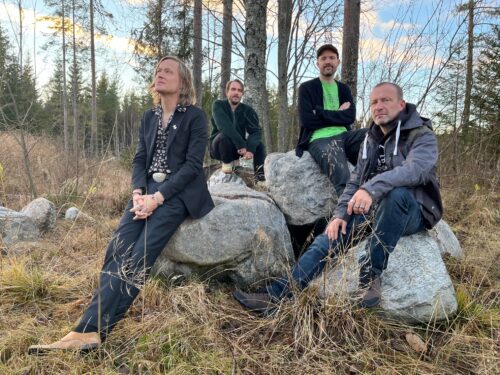
Dennis Lyxzén – vocals and electronics
Mats Gustafsson – bari sax, flutes and live electronics
Magnus Flagge – electric bass
David Sandström – drums and electronics
A NEW ensemble (2022) with roots in Swedish northern city Umeå.
anti racist, anti fascist, free form death-jazz in memory of Lars Lysted
With roots and backgrounds in Refused, TEXT, INVSN, Fire! Orchestra, The International Noise Conspiracy, The End, Serpent, Final Exit and other classic jazz ensembles we are ready to create FRICTION!
ready to rock the world in 2023 and onwards… new album…tours…. the whole package….
one insane premiere- gig done in umeå: oct 28th 2022… one totally insane recording session in Gryssjön: oct 29th 2022….
this story continues….
contact us when neeeded: mats@matsgus.com

ENSEMBLE E
May.14, 2022
DEEPER FOLK MUSIC and Improvised music!!!

Improvised music & folk music from Sweden, Norway, Poland, Ukraine, Portugal and Sápmi!!!
Playing EE Opus ONE (2022) and PLUGS EXTENDED (2000, 2018, 2022) version 13.
news ways and directions of traditional folk music and free improvised music!!!
conductions, graphic scores, free improvisations and many many deeper folk melodies!

Maniucha Bikont (PL) – vocals, tuba
Daniel Formo (NOR) – organ, prepared piano
Arne Forse?n (SWE) – prepared piano, clavichord
Anders Hana (NOR) – langeleik, hardingfele fiddle, jew’s harp
Helga Myhr (NOR) – hardanger fiddle
Susana Santos Silva (POR/SWE) – trumpet
Sylwia S?wia?tkowska (PL) – suka
Mats Gustafsson (SWE/AUT) – sax and flutes, conductions
Mikael Werliin (SWE) – sound
TRAILER: https://www.youtube.com/watch?v=vjF_LOMJ6DE
EE OPUS ONE (album): https://matsgustafsson.bandcamp.com/album/ee-opus-one
A NEW ensemble of international artists and musicians, working within the fields of Contemporary Experimental Music, Noise, Improvised music, Contemporary Folk, Free Jazz and other experimental music-fields and traditions. Creating NEW traditions and perspectives.
Ensemble E works under the leadership of Mats Gustafsson and play a variety of graphic scores and game pieces, composed and initiated by Gustafsson.
Ensemble E focuses on the frictions and balances between solo music expressions and the collective interaction. Instant conductions, graphic scores and instructional pieces are used for the ensemble in its collective form and structure.
Solo music by each member of the EE puts into the overall form – bridging in between the collective group activities – within the fields of Folk Music, Improvised Music and pre-composed Contemporary Music. A genre-evasive ensemble of extreme diversity and complexity!
Ensemble E is making deeper research into traditional and non-traditional ways of expressing the folk music of Scandinavia, Portugal and Poland and how, by putting these traditions in entirely new situations, a radically NEW music can occur!
The personal languages and identities of each member of Ensemble E is key to how the music is able to go into deeper research mode and explore completely new territories of Contemporary Music! Traditional acoustic instruments in direct interactions and deeper tactility of complexities, where only the acoustic colors, interferences and spectrums from each individual instrument are communicating, without filters and electronic processing. The instant interaction between each individual player and the collective urge, perspectives and needs of the music create a NEW platform, a new possibility for generations to come. A NEW music!
“EE Opus ONE” (2022) by Mats Gustafsson
Including interactive ensemble-conductions and solo pieces by each individual of the Ensemble E within Scandinavian, Portugese and Polish Folk music, Contemporary music and Improvised music.
Booking: g.palushkin@gmail.com
FIRST ALBUM: https://www.trost.at/mats-gustafsson-ee-opus-one.html
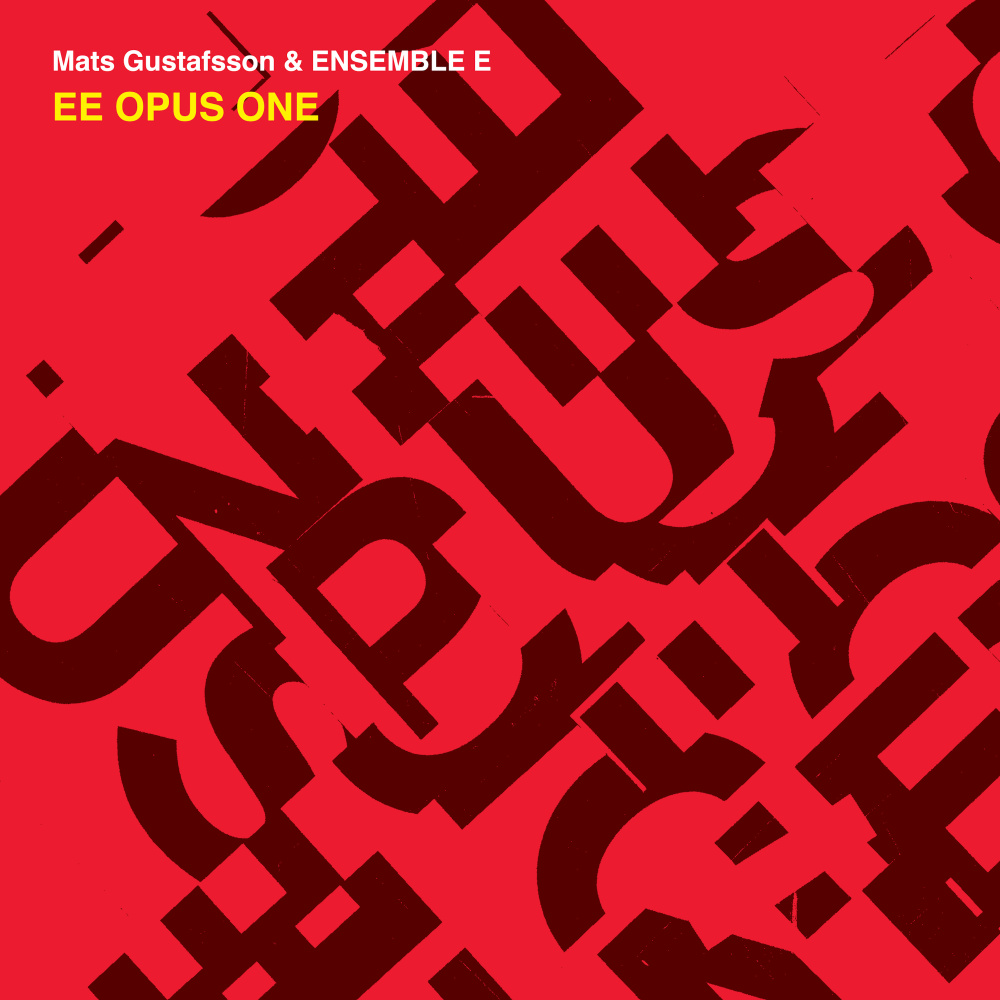
SWEDISH AZZ – the return
Dec.01, 2021
SWEDISH AZZ is back!!!!! …. in a slightly new version, exploring new pieces.
we havent given up on the swedish jazz tresure. Old pieces from the legacy os Swedish jazz in updated versions.
first attempts:
SWEDISH AZZ
Susana Santos Silva – trumpet
Mats Gustafsson – baritone sax and flute
Alexander Zethson – piano and keyboard
Dieb13 – turntables
Per Åke Holmlander – drums and tuba
A new updated version of SWEDISH AZZ is back!
New instrumentation and new material. The same basic idea is intact though: to play swedish jazz from – primarily – the 50s and 60s, and to turn it into a contemporary setting and sound. To go deeper into the heritage of swedish jazz.
The world needs more swedish jazz… and it needs very likely to be delivered by SWEDISH AZZ.
SWEDISH AZZ started in 2008 and took a pause in 2015 to recharge the batteries and to find new material for a new setting. NOW IS THE TIME!
SWEDISH AZZ will now dive deep into wellknown and unknown pieces by Eje Thelin, Dick Gyllander, Lennart Åberg, Per Henrik Wallin, Börje Fredriksson and of course Lars Gullin… as well as others…
To treat the wonderful melodic lines of the swedish jazz in a respectful and loving way, by putting them in new situations, forms and structures. This is our goal and mission.
The swedish jazz legacy will be treated in an unusual instrumentation and approach of electronic and acoustic sounds mixed together.
We like to put the swedish jazz heritage in a contemporary situation and sound.
Why trying to repeat what was already done so well? We prefer to listen to our heroes and sources of inspirations at home (on vinyl…) rather than hearing tame and watered down repititions being done live now. The quality and uniqueness of the materials of swedish jazz from the ”golden years” of the 50s and 60s are amazing and very creative to our ears. And we hope that by putting it in a contemporary and experimental setting that we will be able to make new (and old ) generations curious of swedish jazz… made back in the days… and made now… and for the future….
NOW IS THE TIME!
GUSH
Dec.01, 2021
GUSH
the beginning of it all…..
ON TOUR IN 2024!!!!
in Sweden in September, IN Austria in November and in Germany in December!!!


Mats Gustafsson (reeds and flutes), www.matsgus.com
Sten Sandell (piano), www.stensandell.com
Raymond Strid (drums) www.efi.group.shef.ac.uk
“The members of GUSH are extremely well matched: the group includes three of the Swedish Improv scene´s leading performers, Mats Gustafsson (reeds), Sten Sandell (piano), Raymond Strid (drums). While essentially an example of trio improvising, the longest piece, ”Any warranty Of”, also offers the chance to hear Gustafsson and Sandell produce persuasive solo contributions…. Strids drumming is never less than brilliant fleet, yet somehow restrained, spacious, and alive with tiny metallic nuances. Authoritative collective improvising you cant afford to miss.” Chris Blackford, Wire Mag.
“Surprise is an element that keeps movement on edge, but there is something more. It comes in the way the three understand each other and how they pick up the mental thread that each unravels. Perhaps it comes from having been together since 1988. Yet, to their credit, time has not staled their impulses. Creativity is still ripe. And it is in that that their music bristles and stirs the senses.” All about Jazz
“Gush, a Swedish trio…There are of course many moments where the music is a delight, working at its highest level, serving if you will as an appetizer to other performances.” Coda Magazine
GUSH has collaborated with Sofia Jernberg, Paul Lovens, Barry Guy, Günther Christmann, Sven-Åke Johansson, Phil Wachsmann, Christine Abdelnour, Anders Nyqvist and much more….
International Festivals:
Ulrichberg Kaleidophon, Bochum Ruhr Jazz Festival Aachen Eurigo Tage ,Berlin Workshop Freie Musik, Nickelsdorf Konfrontationen ,Vancouver Jazz Festival ,
Tampere Jazz Happening, Festival Internacional de Novas Músicas, Guarda, Portugal
Selective recordings with GUSH: From Things To Sounds…. (Dragon DRCD 204, 1991) Gush med Sven-Åke Johansson, Tjo och Tjim (Dragon Rec DRLP 192,1991), Live at Fasching (DRCD 313, 1997) Gushwachs with Phil Wachsmann (Bead 002, 1997), Live in Tampere (Dragon 1999), Norrköping (ALP161CD, 2005)
Video:
Blow Out! Oslo – https://www.youtube.com/watch?v=c2LKIVA7_lY
Live at Kaleidophon Ulrichsberg, Austria – https://www.youtube.com/watch?v=dddPSxZaFZE
THE END VIDEO!!!!!
Jan.02, 2021
now! NOW NOW! it is up —– the video to THE END´s album “ALLT ÄR INTET”
by the great dylan pecora:
https://www.youtube.com/watch?v=_gQei3TkmcM&feature=youtu.be
ALLT ÄR INTET – published by:
rare noise!!!
https://www.rarenoiserecords.com/
CUTS
Jul.09, 2020
CUTS
masami akita – noise electronics
balazs pandí – drums
mats gustafsson – saxohones and live electronics
If jazz, as the eminent critic Whitney Balliet once wrote, is the “sound of surprise”, the intensely cathartic, fiercely turbulent live and recorded collaborations between Japanese noise purveyor Masami Akita (aka Merzbow), Hungarian drummer Balazs Pandi and Swedish saxophonist Mats Gustasfsson, are the “sound of shock and awe.”
Sonic assaults of epic proportions, their collaborations blend the bombast of Merzbow’s grinding white noise barrages with Pandi’s thunderous pulse on the kit and Gustafsson’s ferocious abandon on baritone sax and clarinet mixed with live electronics, bringing to mind a marriage of Lou Reed’s Metal Machine Music and Coltrane’s Interstellar Space, with touches of Sonic Youth’s sonic mayhem thrown in for good measure.
The trio released a first recording on RareNoise in 2013 (Cuts), followed by a four-way collaboration with Thurston Moore in 2013 (Cuts Of Guilt, Cuts Deeper), which developed into a further release in 2018 (Cuts Up, Cuts Out).
https://www.rarenoiserecords.com/artists/merzbow-gustafsson-pandi-moore/
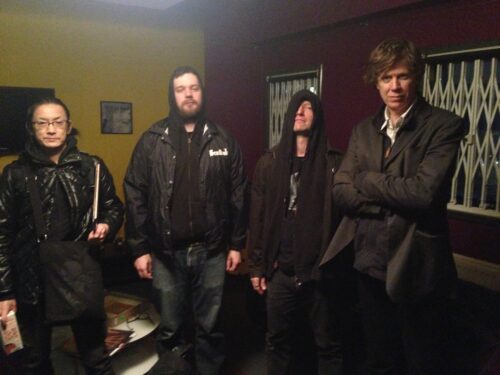
CUTS with Thurston Moore



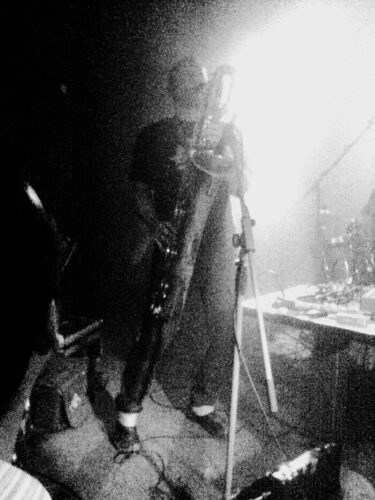


FALLING
Dec.06, 2019
FALLING
christof kurzmann – ppooll, rubberband, voice and live processing
mats gustafsson – slide and baritone saxes, flute, live electronics, piano mate

The duo of “FALLING” – Kurzmann and Gustafsson – is dealing with improvised music, with roots and perspectives of many layers of previous and upcoming traditions. Being it improvised music, electro acoustic music, noise, free jazz, contemporary music, rock and more.
In low dynamic territories of poetry and music is the music melting together into something where the unknown meets and transforms.

EXEMPLE – MUSIK:
https://www.youtube.com/watch?v=HPvlUW5MjHY&list=RDHPvlUW5MjHY&start_radio=1&t=15
EXEMPLE – VIDEO_ LIVE KONSERT:
https://www.youtube.com/watch?v=wZPJWl5BQNg
TEXT:
SOUNDS IN RESPONSE
During the 1970s, Susan Sontag and Marshall McLuhan had the insight and foresight to correctly anticipate a future permanently altered by photography (Sontag) and the internet (McLuhan). There have been many, many social and cultural developments in the last forty years, and not all of them have been as forward thinking as Sontag and McLuhan. Looking at the state of global politics in 2016, the idea that there has been social progress in the last four decades seems, at best, questionable. And, in retrospect, it would seem that the intersection between adventurous art and music with mainstream society was much more common in the 1970s than today.
In general, two art forms central to the cultural development of the 20th century- the cinema and jazz- have followed the conservative direction of contemporary politics. Using the United States as an example- it is impossible not to be disappointed by Hollywood films being made now, particularly when compared to those made forty years ago (The Conversation, Dog Day Afternoon, The French Connection, MASH, The Last Detail, Dawn of the Dead, Taxi Driver, Badlands, A Clockwork Orange, Two-Lane Blacktop…); and it is questionable if the perception of jazz as an open-ended art form, rather than a musical style, will ever recover from the neo-con movement that began during the Reagan era. Today’s creative impetus often seems to be more concerned with replicating an idea of the past instead of pushing against it.
There are certain individuals, however, who have concentrated on what has actually been developing outside the (now global) mainstream during the last decades, artistically and otherwise. Christof Kurzmann and Mats Gustafsson are two of these people. As musicians, they have remained focused on contributing to the contemporary scene, always looking for new ways to challenge themselves and to develop original methods of construction for their work.
One result of their research is this set of duo recordings. I find them to be statements that indicate ways in which it is possible to make music that belongs to this epoch and not the last. On the surface, its fundamental components seem to come from the 20th century: the saxophone (invented in 1846, but not coming to the fore until jazz and Coleman Hawkins took a hold of it), the laptop computer (initially developed around 1980), and tape music (first started around 1950). But when examining the materials it becomes quickly apparent that, though the “machines” may belong to the previous century, the methodologies applied to them do not.
The six pieces on this album began as open improvisations digitally recorded at Martin Siewert’s studio in Vienna, Austria. A section of each improvisation that was considered most successful from a musical standpoint was “spliced out” and kept as a composition- the studio was used as a means to produce a performance rather than to strictly document, not usually the case when recording improvised music. Mats Gustafsson (who also plays electronics here) has added to the range of extended techniques for saxophones instigated in the 1970s, by musicians like Anthony Braxton, Evan Parker, Roscoe Mitchell, Trevor Watts, Steve Lacy, and Peter Brötzmann. He’s developed these through his unique approach to the instruments, which is often built upon phrasing power that can stand up to rhythmic frameworks and volume that frequently have little to do with the origins of improvised music. In many cases, the grooves explored on this collection of recordings are about pulse, but not the rhythmic feel of jazz, nor the timing of late 20th century free improvisation. And as Christof Kurzmann (who also sings here) explained to me, the instrument he plays is not the laptop, but the software that he runs on it, called PPOOLL and refined by Klaus Filip and Arnold Habirl in 2015, as a reworking of their earlier LLOOPP software. Put simply, PPOOLL gives Christof nearly infinite manufacturing possibilities for sound- from creating new material that’s used later in performance, to processing sonic events in real time.
The elements of construction used to make this album and the resulting music all belong to this century, to this period. I think it’s clear that Christof and Mats are not looking backward in an attempt to recreate something that sounds like the past, nor do I feel that they are attempting to be futuristic and artificially avant-garde. FALLING and five other failings is a set of music that responds to the circumstances that we are currently living in, what we are seeing and listening to right now. Compositions for the times. As I hear them, abstract hymns for the left as we are faced with the advance of the right.
-Ken Vandermark: June 15, 2016, Vienna
THE UNDERFLOW
Jul.19, 2019
The Underflow
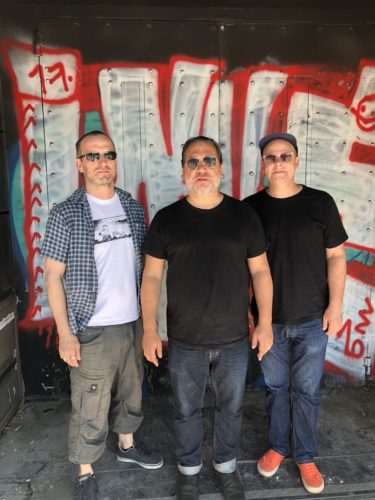 photo : John Corbett
photo : John Corbett
David Grubbs – electric guitar and voice
Mats Gustafsson – saxophones and live electronics
Rob Mazurek – trumpet and electronics
https://soundcloud.com/domm1/the-underflow
The Underflow is the newly minted trio of Mats Gustafsson (reeds, electronics), Rob Mazurek (trumpet, electronics), and David Grubbs (electric guitar). Their self-titled debut album was recorded live in Athens, Greece at the record store/performance venue Underflow and will be released in the fall of 2019 by Corbett vs. Dempsey.
Although Gustafsson, Mazurek, and Grubbs have played together separately and operate within an extensive, overlapping network of collaborators, the three had not convened as a trio until John Corbett proposed the grouping for two nights of concerts in Athens in the summer of 2019. But there is a history: although originally from Sweden, Mats Gustafsson was a regular, vital presence in Chicago during the period when Mazurek and Grubbs were making their mark. It’s Rob Mazurek’s cornet that pushes Gastr del Sol to new highs on the track “The Seasons Reverse,” and Grubbs and Gustafsson released two duo albums in 1999 and 2003 (Apertura and Off-Road), and have been primed for years to take it to the stage again.
The Underflow shows the trio hitting their stride instantly, ranging widely and weirdly with utter self-possession as they veer between a dense frontline of electronics; Gustafsson’s lapidary fluteophone and explosive baritone sax; Grubbs’s crystalline, athematic voice on the guitar; and Mazurek’s all-bets-off improvisatory wildness on trumpet, sampler, and hollerin’ vocal. Satisfying as it is, this recording is only a hint of what lies ahead for the trio as they plot their first tour in early 2020.
the music will be released in the fall of 2019 by CorbettvsDempsey on CD and the Underflow art gallery and recordshop on limited edition vinyl!!!
Touring period Europa: Jan 18th – 25th 2020
Available for festivals and project all year.
booking: danielle@oosterop.com
DAVID GRUBBS
David Grubbs has released fourteen solo albums and appeared on more than 190 releases; his most recent solo recording is Creep Mission (Blue Chopsticks, 2017). Grubbs was a founding member of the groups Gastr del Sol, Bastro, and Squirrel Bait, and has performed with Tony Conrad, Pauline Oliveros, the Red Krayola, Matmos, Royal Trux, Will Oldham, Loren Connors, Otomo Yoshihide, Jan St. Werner, Eli Keszler, and many others. He is known for his ongoing cross-disciplinary collaborations with poet Susan Howe and visual artists Anthony McCall and Angela Bulloch, and in 2000, his The Spectrum Between (Drag City) was named “Album of the Year” in the London Sunday Times. Grubbs is the author of Now that the audience is assembled and Records Ruin the Landscape: John Cage, the Sixties, and Sound Recording (both Duke University Press) and, with Anthony McCall, Simultaneous Soloists (Pioneer Works Press).
“Grubbs self-consciously split[s] his brain to exacerbate the essential creative conflict, the experimental academic battling the sentimental artist on a darkling plain. The listener wins again.”
Stewart Lee, London Sunday Times
MATS GUSTAFSSON
Improviser and composer. Soloartist. Worldwide tours in working groups, Fire!, NU – emsemble, Fire! Orchestra, Luft, The End, Anguish and related. Collaborations with contemporary dance, theatre, visual arts as well as projects within noise, electronica, contemporary rock, contemporary music and free jazz.
Projects together with Jim O´Rourke, Christian Marclay, Albert Oehlen, Peter Brötzmann, Ken Vandermark, Eye, Joe McPhee, Merzbow, Otomo Yoshihide, Sabu Toyozumi, Derek Bailey, Paul Lovens, Neneh Cherry, Yoshimi and others
Producer and curator of International festivals and concert tours as well as work with his own record labels Slottet, Crazy Wisdom, OlofBright Editions, Blue Tower Records and TROTS.
Discaholik.
“There’s not much I can add to that. Very beautiful, very original…Full of surprise and very stimulating. More power to him.…I would vote for him, yeah”
-steve lacy, 2000
“one of the world’s most original and exhilarating saxophonists” Barry Witherden, BBC Music Magazine
“He sucks…”
-olof madsen, 2005
ROB MAZUREK
Rob Mazurek is a multidisciplinary artist/abstractivist, with a focus on electro-acoustic composition, improvisation, performance, painting, sculpture, video, film and installation, who spent much of his creative life in Chicago, and then Brazil. He currently lives and works in Marfa Texas with his wife Britt Mazurek.
Over the years Mazurek has lead/co-lead many ensembles of various sizes and shapes including Exploding Star Orchestra, Exploding Star International, Desert Encrypts, Immortal Birds Bright Wings, Pharaoh and the Underground (featuring Pharoah Sanders), Chicago Underground, Jeff Parker Duo, Pulsar Quartet, São Paulo Underground, Alternate Moon Cycles, Alien Flower Sutra, Star Splitter, each of which possesses its own distinct musical personality. He has collaborated with a wide variety of artists, such as the great Bill Dixon, Pharoah Sanders, Mike Ladd, Roscoe Mitchell, Yusef Lateef, Fred Anderson, Nicole Mitchell, Fred Hopkins, Liam Gillick, Naná Vasconcelos, Rodrigo Brandao, Jim O’Rourke and others.
…all of Mazurek’s work, draws from multiple traditions, each of them already porous and absorbent, and combines ideas from each into something utterly new, while keeping it welcoming to almost any curious listener.”
– The Wire
“Mixing the opaque with the diffused and blurring the lines between electric and acoustic, Rob Mazurek’s wide ambition continues to race toward the outer limits of what is possible in music.”
– Something Else
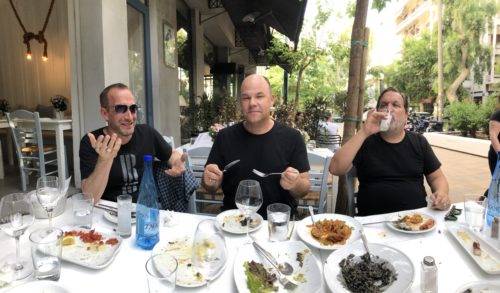
photo : John Corbett
ANGUISH
May.10, 2019
ANGUISH

NEW group of NOISEFREEJAZZHIPHOPPSYCH BEAUTY!
Will Brooks (dälek)
vocals, SAMPLR, Eventide/Elektron effect pedals, 1 note on MOOG rogue, 3 notes on grand piano
Mats Gustafsson (Fire!, The End)
tenor saxophone, live electronics, 3 notes on grand piano
Hans Joachim Irmler (Faust)
synthesizers, vocals
Mike Mare (dälek)
guitar, electronics, synthesizer
Andreas Werliin (Fire! Wildbirds & Peacedrums)
“The dark, impossibly intense dirges, industrial noise onslaughts and banshee-like free jazz wailing heard throughout Anguish could be an imposing soundtrack for a dystopian, post-apocalyptic future. This powerhouse, inter-generational offering and RareNoise Records debut brings together an unlikely gathering of members of the New Jersey-based experimental hip-hop group Dälek (electronic musician and vocalist Will Brooks, guitarist-keyboardist Mike Mare), the Swedish free jazz group Fire! Orchestra (tenor saxophonist Mats Gustafsson, drummer Andreas Werliin) and the classic ‘70s German krautrock band Faust (keyboardist and 68-year-old founding member Hans Joachim Irmler).


